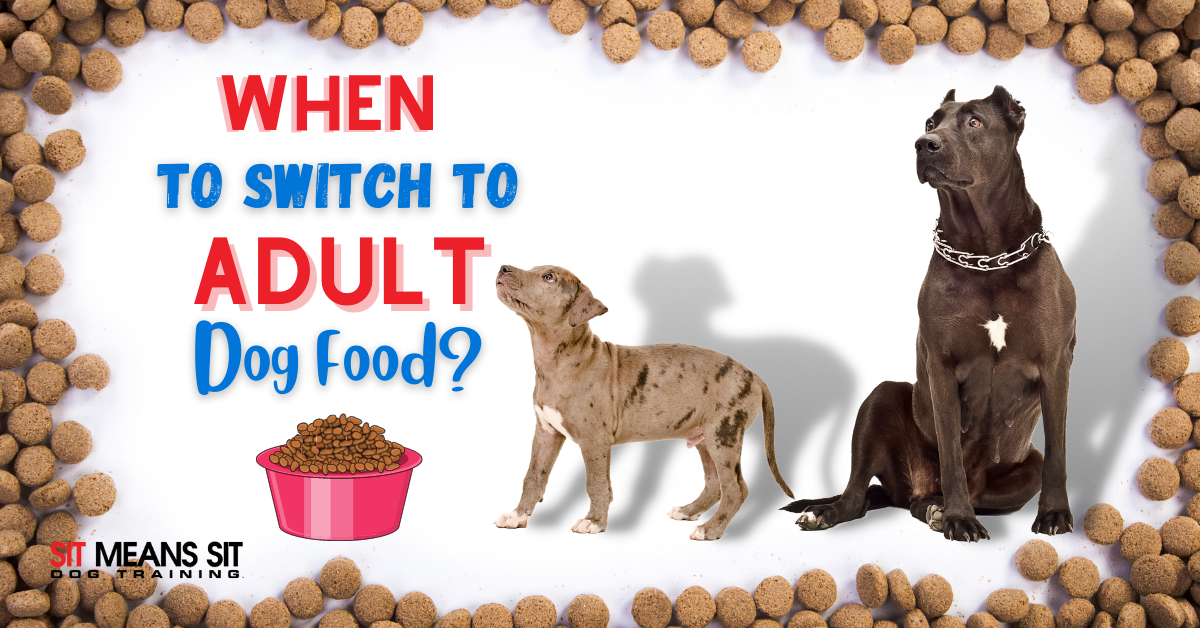
When Do I Switch to Adult Dog Food?
There’s nothing quite like watching your adorable puppy grow into adulthood and become your forever friend. Along the way, you are there for all their big milestones and help nurture them to their full potential as a pooch. But the transition from puppy to adult can be tricky at times, especially considering your dog’s changing dietary needs.
When your dog is a puppy, its nutritional needs are focused on growing and nurturing a young tummy and bones. But, when your dog is an adult, the nutrition focus shifts towards maintaining health, even sometimes adding more emphasis on areas of the body through food, like eyes!
When making the switch, it’s important to make beneficial dietary decisions as well as swapping at the right time. Each dog is different, so consulting with your vet is best, but generally, the timeline is around 12 months.
Why is a Puppy’s Diet Different?
No matter the age, dogs need a healthy balance of fat, protein, and nutrients. At a minimum, puppies should be having around 8% fat and 22% protein for healthy growth. This is different from an adult dog’s intake of 5% fat and 18% protein, as adults don’t need as heavy of a diet focus for developing anymore!
Puppies have higher levels of fat and protein in their meals in order to stimulate proper growth. Their food is formulated to give the best nutritional value to ensure adequate development and health of organs and bones. But, as a puppy ages, their diet needs to change as they stop growing and you don’t want to have your dog be affected by overgrowth. Once this stage is reached, the transition to adult food is a go! And remember, every pooch is different, and each stage of their life requires some type of reevaluation of dietary needs.
When to Switch
Dogs younger than 12 months are labeled as puppies, despite how big they may be. Puppies can switch diets to adult food once they reach around 80% of their expected adult size, so it’s important you consult with your vet about this! It also means that larger breeds will have longer transition times than smaller pups. Small breeds swap at around 9-10 months while bigger puppies tend to switch around 12-18 months.
Toy/Small Dog Breeds
Adult small dogs weigh less than 20 lbs and toy breeds weigh less than 12 lbs. These breeds reach adult size much faster than large breeds as there is less growth time. They will likely need to switch to adult food quicker to maintain health and prevent overgrowth.
Medium Dog Breeds
Medium adult dogs are categorized by weighing less than 30-50 lbs. They will generally switch foods at 10-12 months, depending on the specific breed.
Large/Giant Dog Breeds
Large adult dogs weigh in at less than 50-80 lbs. Giant breeds weigh over 80 lbs. Large dogs often switch diets at 12 months, while it can take up to 18 for giant dogs to make the transition. The biggest obstacle concerning large and giant dogs is the ability to control overgrowth. Growing too rapidly can put stress on the bones or joints and cause weak development, resulting in bigger problems in adulthood.
Slow Transition
Slowly switching diets, at any age, is the best way to go about transitioning. Making a sudden change (even if it’s dry vs. wet food) can lead to anxiety, an upset stomach, or sickness. Dogs are creatures of habit, so they get used to their routine. Slowly incorporating new food with their current food (for around 7-10 days) will help ease any issues.
Make sure you observe your dog’s reaction to their dietary changes and bring up concerns you may have to your vet. They will know just what your dog needs nutritionally and help you reach that goal.
